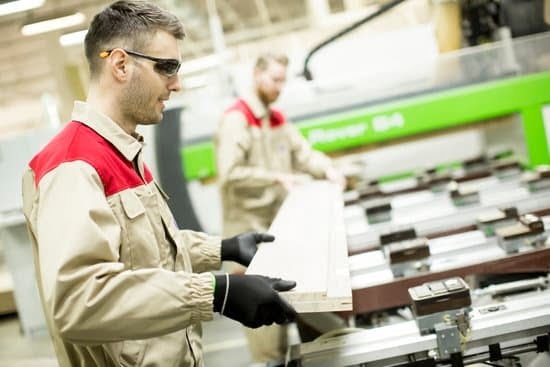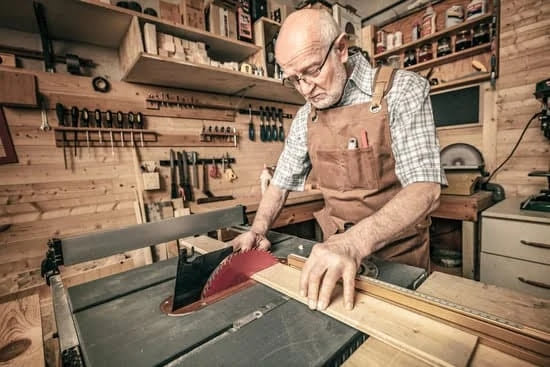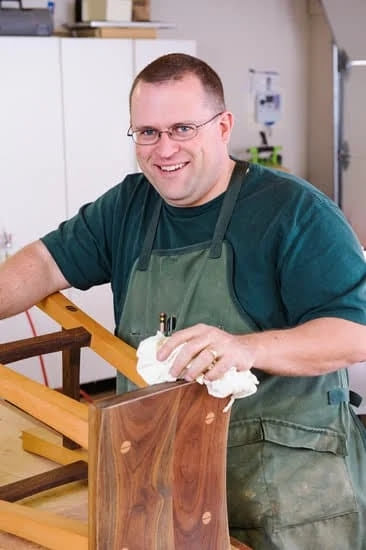
Woodworking projects for kids can provide a great opportunity to introduce them to the world of DIY crafting. Not only do woodworking projects bring creative satisfaction, but they also help children build important skills associated with fine motor control and problem-solving.
By working on these projects, kids will develop fine motor skills like using tools, dexterity in their fingers, and accuracy in cutting or drilling. At the same time, they are also engaging in problem solving by deciding the best ways to approach a project and find solutions if something doesn’t quite go as planned.
Of course, there are some safety considerations that should be taken into account when it comes to woodworking. Children should always be supervised around sharp tools, wear protective gear like safety glasses and make sure that any type of saw or drill is turned off before use. With these simple steps in place, woodworking is an activity even younger children can enjoy without any fear of harm coming their way.
Once you set up a proper work area with all the necessary safety precautions in place, you can get started on some fun woodworking projects just for kids. Depending on your kid’s age group, there are plenty of options to choose from – ranging from simple birdhouses to mini wooden toolboxes.
Even if they’re too young for more complex projects like furniture making or larger carpentry tasks, Popsicle sticks and Elmer’s glue are perfect for low-risk crafts that still teach your child basic concepts. Or if you have access to the right power tools (or willing adults), kids might enjoy creating animal shapes by propping up pieces of scrap lumber with dowels or screws and spray painting their very own life-size structures.
No matter what kind of project you start your child out with, it’s important not to put too much pressure on yourself or them during this creative experience. Woodworking may naturally lead to frustration since mistakes are bound to happen – so simply talk through each step and encourage patience so that everyone remains calm throughout it all.
With consistent practice and dedication over time (as well as a bit of adult guidance), your young one may become quite the adept little craftsperson in no time at all.
An Overview of the Most Popular Woodworking Projects for Kids
Woodworking is an incredibly fulfilling hobby and one that can be passed down from generation to generation. Kids of all ages will love getting creative and building something with their own hands, even if there are a few bumps in the road (you might not want to get your child started on power tools anytime soon).
Whether it’s a simple birdhouse or a more complicated furniture project, there are plenty of woodworking projects for kids that will keep them entertained and can help youngsters build important skills. Here is an overview of some popular woodworking projects for kids:
Project Examples
- Birdhouses: This is a great introduction to basic carpentry for younger children. It’s both satisfying and relatively easy.
- Bookends: Bookends can be small wooden sculptures or even just simple blocks painted in different colours.
- Garden Planters: Building garden planters out of wood gives you the chance to create unique pieces that add value to your yard. A successful garden planter project can turn into hours of outdoor enjoyment.
- Toy Boxes: Every kid needs somewhere to store all their toys. A simple wooden toy box with decorative accents makes the perfect storage solution.
- Picture Frames: Kids will love displaying artwork and photographs in custom-made frames built from scratch.
It isn’t hard to find fun woodworking projects for kids once they have some basic knowledge under their belt. Some of the best ideas come from taking everyday objects or household items and putting your own spin on them. For example, a kid could make a pirate telescope out of spare scraps of wood, paint it with metallic spray paint, and use string or chains as an eyepiece.
Or how about turning old jam jars into wind chimes made out of driftwood, stones, twine or beads? The possibilities are endless.
Another great idea is transforming scraps into something useful for around the house; coasters that feature child-friendly designs like cars or animals go down well with parents who know they’ll be put to good use (and stopped from leaving telltale coffee rings all over surfaces).
Another favourite is making model boats (or rafts) out of sticks, feathers and other odds n’ ends – complete with sails made using sheets crafted from newspaper and tape – which can then float away along local streams.
Kids learn valuable skills when it comes to creating things with budding technology such as 3D printing, but nothing quite compares to when they make something truly unique using just simple tools and materials found around the house (or ordered online). Woodworking provides such an opportunity where children can stretch their imagination while gaining hands-on experience building anything they set their mind too – no matter how wacky.
From clocks & caterpillars to servers & skyscrapers – let your little ones go wild coming up with ideas.
Benefits of Introducing Kids to Woodworking at an Early Age
While woodworking projects for kids can be fun, there are many other advantages that children can gain from learning this craft at an early age. Early exposure to the tactile qualities of wood, and the concept of creating something from nothing, can provide children with a range of benefits:
- A sense of accomplishment and pride.
- Development of fine motor skills.
- Better Math and Science skills as they learn how to measure wood and use tools in practical ways.
- Creative thinking in problem-solving scenarios.
Woodworking tasks can also help build confidence in terms of setting goals, using tools correctly, aiming for success and taking risks. This is especially beneficial for younger children who might not have the chance to take on such a task by themselves due to their age or lack of understanding.
Participating in woodworking projects increases memory and cognitive development as following plans requires focus, attention to detail, sequenced action steps and other specific mental gymnastics. Safety is also enhanced because pre-teens are more likely to understand the importance of proper safety instruction when working with tools than are toddlers or infants.
Woodworking also teaches kids patience which provides resilience in the face of failure or tough times while encouraging them with positive reinforcement for successful outcomes. It offers developable skills where mistakes are still recoverable as opposed to many other activities which do not offer room for repetition if things don’t turn out right the first time around. In addition, woodworking helps foster appreciation for aesthetics through improved self-expression making them more sensitive to aesthetic beauty.
The Essential Kids Woodworking Tools and Supplies Needed
When it comes to woodworking projects for kids, there are several tools and supplies that will be needed to help make those projects successful. Taking the time to gather all of the supplies and ensure that your child is working with quality tools is essential to getting the most out of any woodworking project.
Tools
To begin any woodworking project with your child, you will need a few basic tools. The following list provides the foundational items needed:
- Safety glasses
- Gloves
- Drill
- Clamps
- Hammer
- Screwdriver
- Saw (preferably an electric saw)
In addition to these basic tools, other more specialized items may be needed depending on the project. For instance, if your child is making a table or stool, they might need a router for detailed cutting or shaping of their piece. Other common woodworking tools include sanders, chisels and planes. Ultimately as long as you have the basics listed above, you should easily be able to complete many woodworking projects efficiently and safely.
Materials
Each woodworking project will require different materials; however some basics include:
- Wood of various types (for example oak, maple, Pine)
- Nails
- Screws
Safety Precautions for Woodworking Projects with Kids
When teaching your children the craft of woodworking, it’s important to make sure they understand the safety precautions involved. If kids are not adequately supervised or provided with appropriate tools and instruction, there is a risk of injury. Even experienced adults should be aware of potential hazards in any woodworking situation.
Eye Protection
Safety goggles are an essential precaution when partaking in any type of woodwork project with kids. Flying splinters from sawing or hammering out projects can cause serious eye damage. Goggles will protect their eyes, allowing them to work safely.
Hand Tools
Young children lack the fine motor skills necessary for using adult-sized hand tools such as drills and saws properly. When introducing young kids to woodworking, consider using kid-sized tools until their coordination improves. Additionally, always ensure that chisels and knives used by younger children are dull in order to prevent cutting themselves or others near them while working on a project.
Power Tools
Power tools present a unique set of risks for young children working on a project; they require extra precautionary oversight to mitigate potential danger but still allow creative expression without hampering exploration and free play alike.
Before allowing use of power tools with younger kids, have an initiated adult present at all times to provide instructions on their proper use as well as observe the work being done in order to identify any dangerous situations or mistakes quickly and preemptively correct them if needed.
Easy Woodworking Project Ideas for Beginners
Woodworking can be a great hobby for kids of all ages, and it’s a great way to encourage they’re creative thinking and their problem-solving skills. With the right tools, some guidance, and the right materials, your kiddos will be able to build amazing projects they can take pride in.
Toy Chalet
This is the perfect woodworking project for younger kids who are just starting out with woodworking. This toy chalet is an easy-to-follow project that only requires basic materials like wood glue, paint brushes, and paint. The instructions make it easy to follow and provide helpful tips along the way. At the end of the project, your kids will have a beautiful wooden toy to show off to their friends.
Cereal Box Shelves
This is another great beginner project that you can do with simple materials like cereal boxes and construction paper. Kids of all ages can learn how to assemble these cute little shelves for their bedroom or playroom. This project teaches them valuable building techniques while also encouraging them to upcycle old items they already have around their home.
Picture Frames
Making picture frames is an easy yet rewarding activity that kids of all ages will enjoy. The best part about this activity is that you don’t need any special tools – just an old frame or two, paint and glue. You can teach them how to make neat patterns or let them add decorations as they please; either way, they’ll end up making a unique frame worthy of displaying on their walls.
Creative Woodworking Projects To Stimulate Older Kids
Woodworking is an excellent activity for kids, who can not only increase their skills while learning safe practices but also have fun. It’s an especially great way to encourage creativity among older kids by introducing them to a range of more challenging projects. Here are some creative woodworking projects that will engage and inspire older kids:
- Creating Adirondack Chairs or Rockers: Complex woodworking projects such as these can teach children the steps they need to take to make almost any item out of wood. They would also give them an amazing sense of accomplishment when they finished building them.
- Designing and Building Stage Sets: Encouraging creativity and imagination amongst your older kids with set designs and layouts for theatrical performances could be an engaging project, as there’s plenty of potential for individual skill development.
- Making Wooden Toys or Games: Kids love playing with toys, so why not let them get involved in the entire process from conception to finishing? Whether it be creating a replica game board, checkerboard or even a puzzle piece – this kind of project offers hours of fun.
Whether at home or in the classroom, using tools like saws and hammers can help guide your children into safely operating bigger tools by understanding basics such as methods for cutting different types of wooden boards. Ensuring safety practices are followed is key, such as wearing protective gear like goggles, gloves and aprons when necessary.
In addition to these safety basics, sanding helps smooth off uneven edges while staining creates beautiful finishes that enhance the aesthetic appeal of these creations when completed.
Involving your older kids in intricate DIY projects has many benefits; not only do they gain transferable skills in areas like craftsmanship, numeracy and coordination – but they can enjoy the satisfaction of creating something from start-to-finish on their own. Woodworking projects therefore provide hours upon hours of enjoyment with tangible results. Assigning roles within teams can also promote cooperative working habits between your children as well as general life skills including communication and critical thinking capabilities.
As well encouraging physical activities such painting miniaturized models, shaping various pieces into 3D items with several moving parts gives children insight into processes used by professional carpenters too. Therefore allowing them to create imaginative structures may fire up their curiosity about how things work mechanically. Additionally painting on bright colors which define objects helps reveals complexities hidden beneath clever engineering designs – showcasing just some more reasons why your little ones will love woodworking.
Tips to Make Woodworking Enjoyable for Kids
Woodworking can be a fun, yet educational, activity for children of all ages. Woodworking projects for kids gives them the opportunity to explore their imaginations and practice creativity as they construct objects with wood. It also allows them to increase their skills in fine motor skills, problem solving and collaboration. Getting children involved in woodworking at an early age may lead to a life-long appreciation of the craft.
There are many helpful tips that can make woodworking enjoyable for kids. Preparing for the project is important, but efficiency is not as important as safety. Lay down ground rules early on so that children understand proper safety techniques when using tools such as hammers or saws.
Having the right supplies and materials available is essential prior to beginning any project. Make sure not to assign overly complicated tasks where precision matters; simple projects that use ample materials should be chosen instead in order to prevent feelings of frustration or failure if the child’s work does not yield immaculate results.
Letting a kid help pick out what project to do and have input on how it should look will allow them to take ownership over the task at hand and thus maintain enthusiasm about completing their work.
Close supervision throughout an entire woodworking project is extremely important since power saws can present danger if handled incorrectly. However, by choosing woodworking projects appropriate for your child’s age and skill level, executing tasks can become easier with consecutive practice runs; soon enough your child will be able to execute more complicated activities without so much direct guidance from you.
It’s also crucial create an inviting atmosphere filled with praise instead of criticism so that your child feels comfortable enough in making mistakes while learning intricate techniques associated with woodworking projects. By incorporating these key points into your teaching style, not only will this inspire growth in terms of developing technical abilities but a newfound appreciation for making art out of crafted structures made from real wood material.




